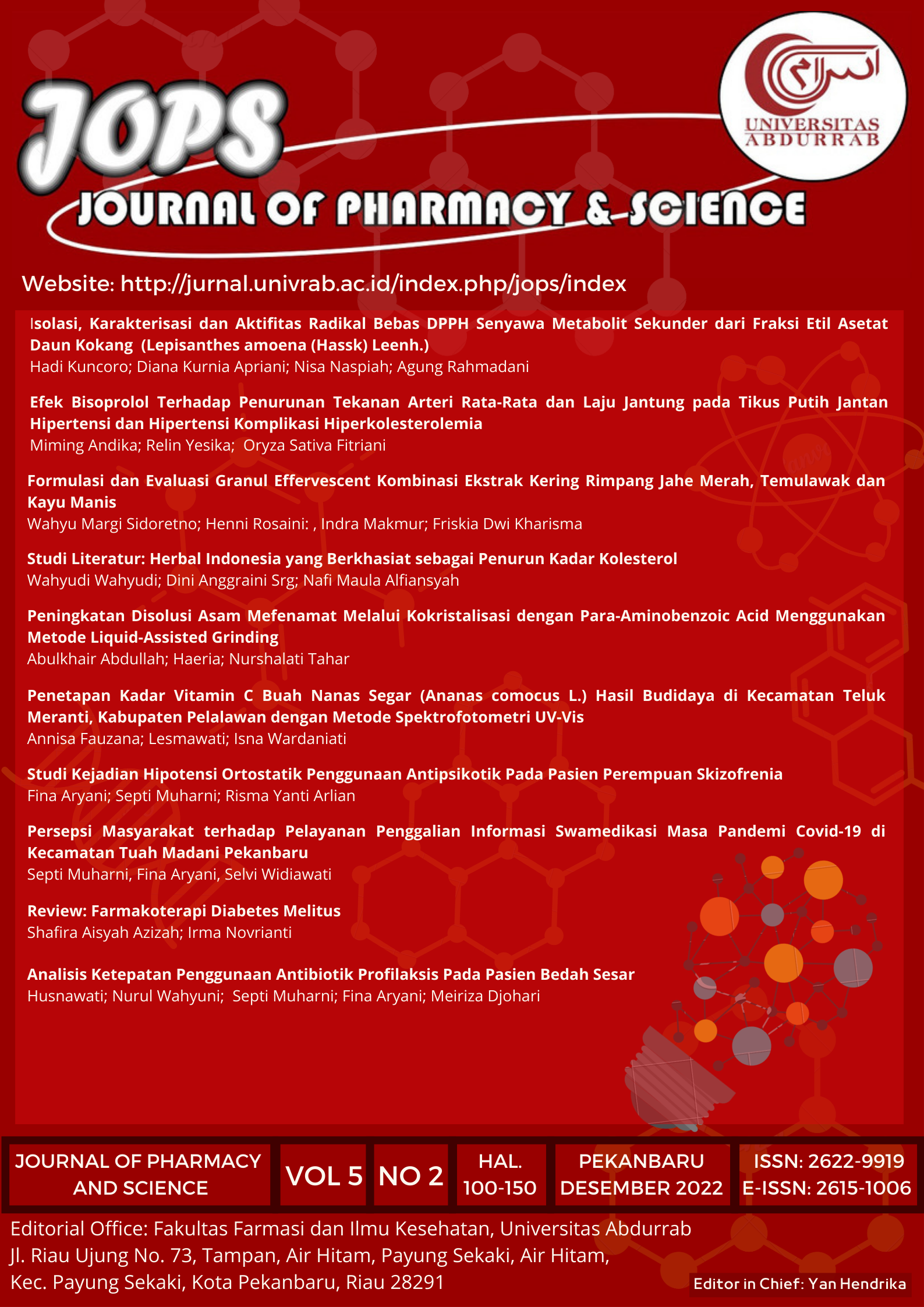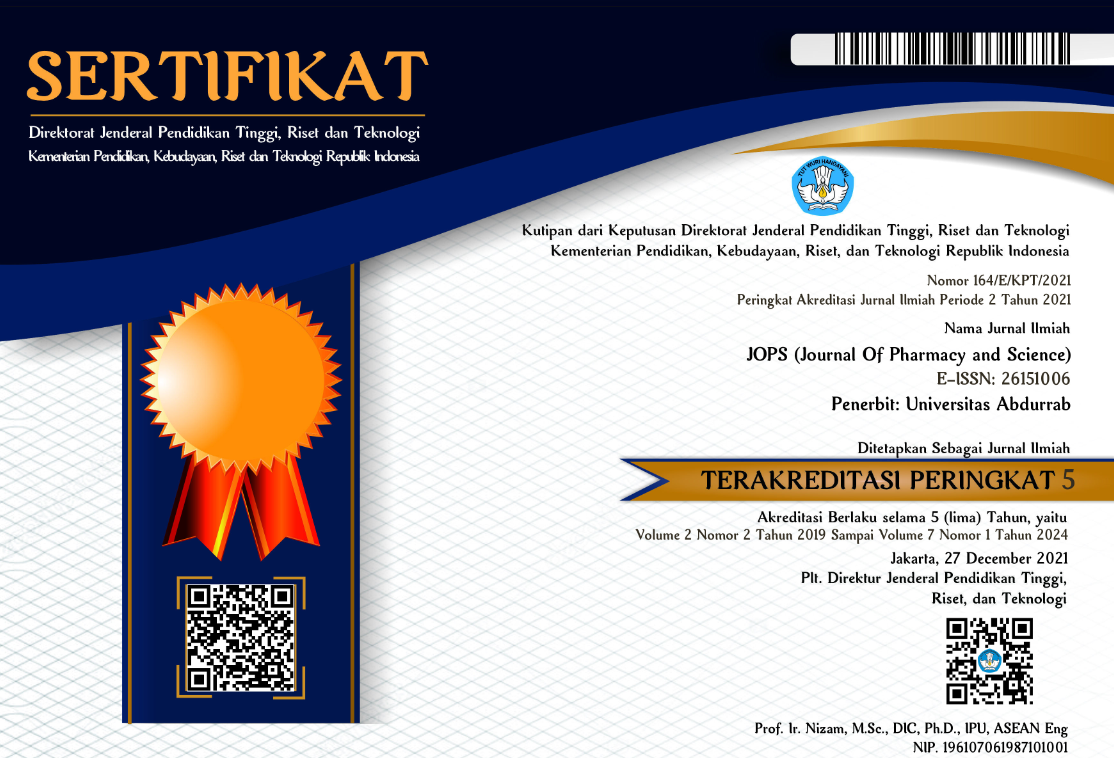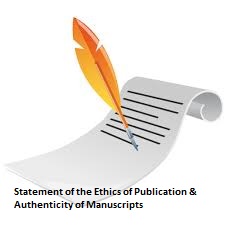Dissolution Improvement of Mefenamic Acid Through Cocrystallization with Aminobenzoic Acid Using Liquid-Assisted Grinding Method
Abstract
Cocrystallization of mefenamic acid (AM) with para-aminobenzoic acid (PABA) as a coformer has been carried out using the liquid-assisted grinding method. This study aims to determine whether mefenamic acid can be increased its dissolution rate through the formation of cocrystals with PABA. Cocrystal AM-PABA were prepared in a 1:2 molar ratio. The dissolution rate of AM-PABA cocrystal was 1.45 times better than that of pure mefenamic acid. The formation of cocrystals was confirmed by characterization results which showed the formation of a new crystalline phase which was indicated by the appearance of new diffractogram peaks on XRD, decreasing melting point on DSC thermogram, and shifting and decreasing of wavenumber intensity in FTIR spectra.
References
Braga, D. et al. (2006) ‘Mechanochemical Preparation of Molecular and Supramolecular Organometallic Materials and Coordination Networks’, Dalton Transactions, pp. 1249–1263.
Friscic, T. and Jones, W. (2009) ‘Recent Advances in Understanding the Mechanism of Cocrystal Formation via Grinding’, Crystal Growth & Design, 9(3), pp. 1621–1637.
Izutsu, K. et al. (2016) ‘Characterization and Quality Control of Pharmaceutical Cocrystals’, Chemical and Pharmaceutical Bulletin, 64(10), pp. 1421–1430.
Kawabata, Y. et al. (2011) ‘Formulation Design for Poorly Water-Soluble Drugs Based on Biopharmaceutics Classification System: Basic Approaches and Practical Applications’, International Journal of Pharmaceutics, 420, pp. 1–10.
Korotkova, E. I. and Kratochvíl, B. (2014) ‘Pharmaceutical Cocrystals’, Procedia Chemistry, 10, pp. 473–476.
Qiao, N. et al. (2011) ‘Pharmaceutical Cocrystals: An Overview’, International Journal of Pharmaceutics, 419, pp. 1–11.
Savjani, K. T., Gajjar, A. K. and Savjani, J. K. (2012) ‘Drug Solubility: Importance and Enhancement Techniques’, ISRN Pharmaceutics.
Schultheiss, N. and Newman, A. (2009) ‘Pharmaceutical Cocrystals and Their Physicochemical Properties’, Crystal Growth and Design, 9(6), pp. 2950–2967.
Shaikh, M. I., Derle, N. D. and Bhamber, R. (2012) ‘Permeability Enhancement Techniques for Poorly Permeable Drugs: A Review’, Journal of Applied Pharmaceutical Science, 2(6), pp. 34–39.
Utami, D., Nugrahani, I. and Ibrahim, S. (2016) ‘Formation and Characterization of Mefenamic Acid-Nicotinamide Cocrystal During Co-Milling Based on X-Ray Powder Diffraction Analysis’, Journal of Applied Pharmaceutical Science, 6(10), pp. 75–81.
Vishweshwar, P. et al. (2006) ‘Pharmaceutical Co-Crystals’, Journal of pharmaceutical sciences, 95(3), pp. 499–516.
Copyright (c) 2022 JOPS (Journal Of Pharmacy and Science)

This work is licensed under a Creative Commons Attribution-NonCommercial-ShareAlike 4.0 International License.
1. Copyright of all journal manuscripts is held by the JOPS (Journal Of Pharmacy and Science)
2. Formal legal provisions to access digital articles of electronic journal are subject to the provision of the Creative Commons Attribution-ShareAlike license (CC BY-NC-SA), which means that JOPS (Journal Of Pharmacy and Science) is rightful to keep, transfer media/format, manage in the form of databases, maintain, and publish articles.
3. Published manuscripts both printed and electronic are open access for educational, research, and library purposes. Additiponally, the editorial board is not responsible for any violations of copyright law.
licensed under a Creative Commons Attribution-ShareAlike 4.0 International License.
 pdf
pdf
 Abstract views: 998
Abstract views: 998
 downloads: 1017
downloads: 1017

 :
:

1.png)








